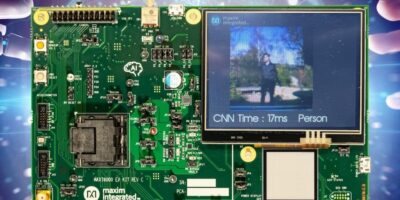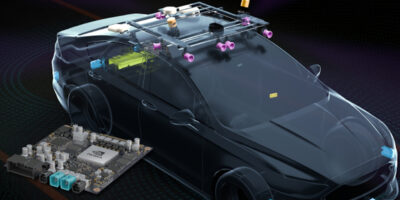Claimed to be the lowest power person detection system, the combination of Maxim Integrated’s MAX78000 artificial intelligence (AI) microcontroller and Aizip’s Visual Wake Words model bring human-figure detection to IoT imaging and video with a power budget of just 0.7 mJ per inference. This, says Maxim, is a 100 fold improvement on the performance of conventional software, making it “the most economical and efficient IoT person-detection solution available”.
The MAX78000 neural-network microcontroller detects people in an image using Aizip’s Visual Wake Words (VWW) model at just 0.7 mJ per inference. This allows 13 million inferences from a single AA/LR6 battery and is 100 times lower than conventional software solutions. It is, says Maxim, the most economical and efficient IoT person-detection solution available. The low-power network provides longer operation for battery-powered IoT systems that require human-presence detection, including building energy management and smart security cameras.
The MAX78000 low-power, neural network accelerated microcontroller executes AI inferences at less than 1/100th the energy of conventional software solutions to improve run-time for battery-powered edge AI applications, continues Maxim. The mixed precision VWW network is part of the Aizip Intelligent Vision Deep Neural Network (AIV DNN) series for image and video applications and was developed with Aizip’s proprietary design automation tools to achieve greater than 85 per cent human-presence accuracy.
The extreme model compression delivers accurate smart vision with a memory-constrained, low-cost AI-accelerated microcontroller and cost-sensitive image sensors, says Maxim.
The MAX78000 microcontroller and MAX78000EVKIT# evaluation kit are available now directly from Maxim Integrated’s website and through authorised distributors.
AIV DNN series models, tools and services are available directly from Aizip.
Aizip develops AI models for IoT applications. Based in Silicon Valley, Aizip provides design services with superior performance, quick turnaround time, and “excellent [return on investment] ROI.
Maxim Integrated offers a broad portfolio of semiconductors, tools and support to deliver efficient power, precision measurement, reliable connectivity and robust protection along with intelligent processing. Designers in application areas such as automotive, communications, consumer, data centre, healthcare, industrial and the IoT.







